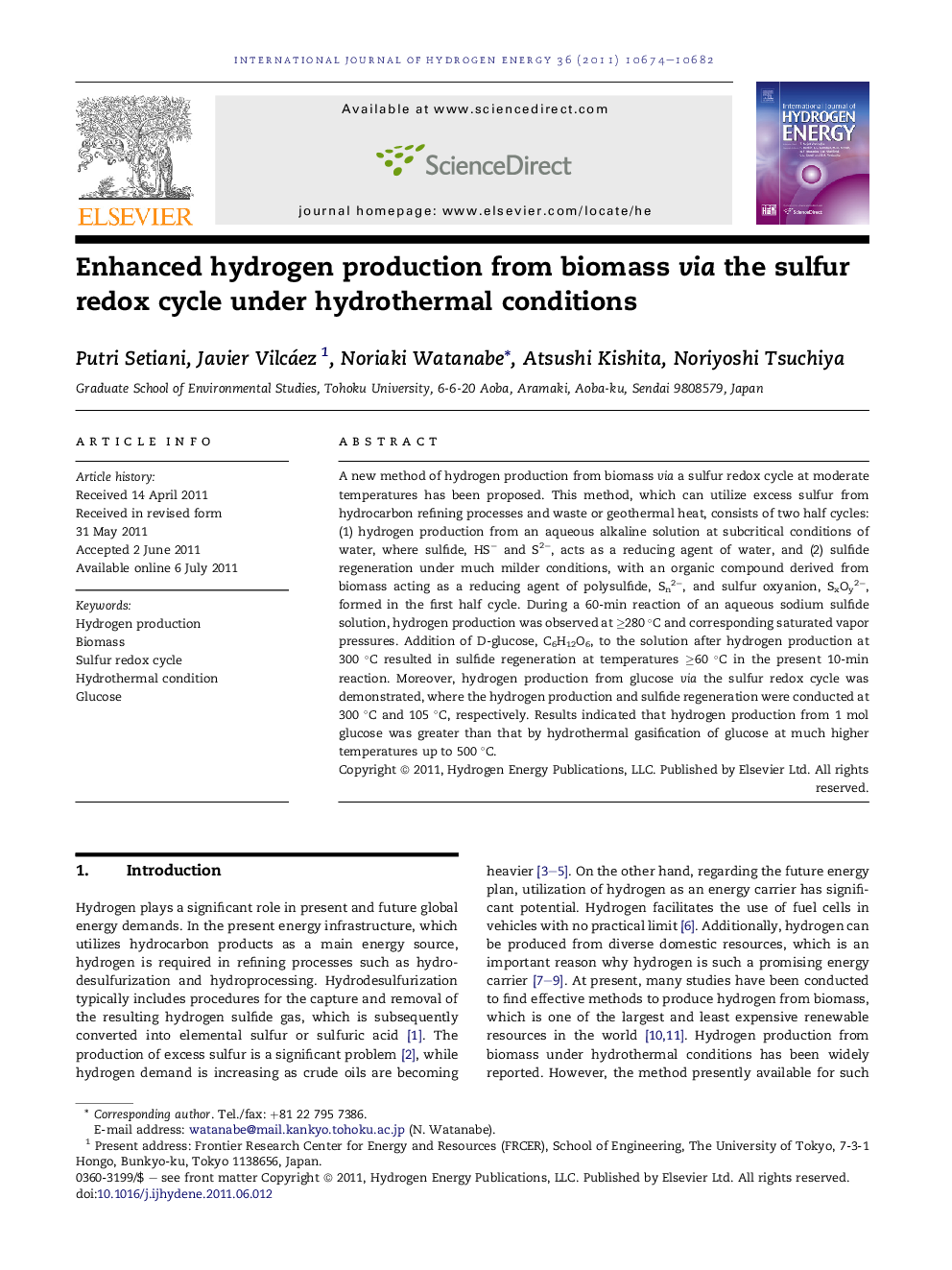| Article ID | Journal | Published Year | Pages | File Type |
|---|---|---|---|---|
| 1277535 | International Journal of Hydrogen Energy | 2011 | 9 Pages |
A new method of hydrogen production from biomass via a sulfur redox cycle at moderate temperatures has been proposed. This method, which can utilize excess sulfur from hydrocarbon refining processes and waste or geothermal heat, consists of two half cycles: (1) hydrogen production from an aqueous alkaline solution at subcritical conditions of water, where sulfide, HS− and S2−, acts as a reducing agent of water, and (2) sulfide regeneration under much milder conditions, with an organic compound derived from biomass acting as a reducing agent of polysulfide, Sn2−, and sulfur oxyanion, SxOy2−, formed in the first half cycle. During a 60-min reaction of an aqueous sodium sulfide solution, hydrogen production was observed at ≥280 °C and corresponding saturated vapor pressures. Addition of D-glucose, C6H12O6, to the solution after hydrogen production at 300 °C resulted in sulfide regeneration at temperatures ≥60 °C in the present 10-min reaction. Moreover, hydrogen production from glucose via the sulfur redox cycle was demonstrated, where the hydrogen production and sulfide regeneration were conducted at 300 °C and 105 °C, respectively. Results indicated that hydrogen production from 1 mol glucose was greater than that by hydrothermal gasification of glucose at much higher temperatures up to 500 °C.
► A new method of hydrogen production from biomass via a sulfur redox cycle. ► Hydrogen production using sulfide as a reducer of subcritical water. ► Sulfide regeneration under much milder conditions. ► Glucose acts as a reducing agent of polysulfide and sulfur oxyanion. ► Hydrogen production from 1 mol glucose was greater than that by hydrothermal gasification.
